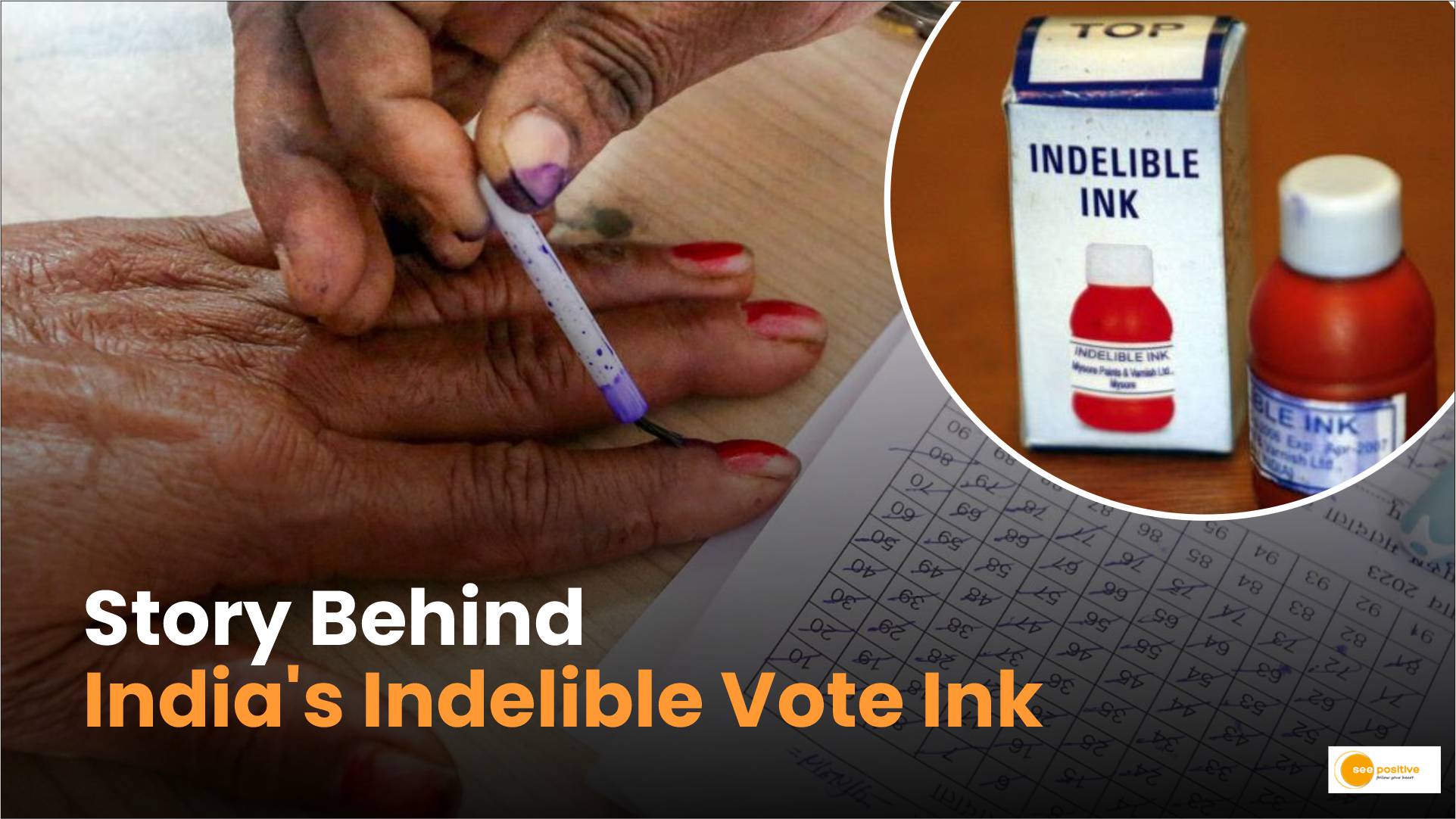Electoral ink: As millions of Indian citizens head to the polls during elections, a seemingly inconspicuous yet crucial element plays a significant role in maintaining the integrity of the democratic process: indelible ink. This violet mark, applied to voters’ fingers, ensures that each eligible citizen casts only one vote, preventing fraudulent activities such as multiple voting. But how did this ink come into existence, and who are the custodians of its production? Let’s delve into the fascinating history of India’s indelible electoral ink.
What Is Indelible Ink?
Indelible ink, also known as electoral ink, electoral stain, or phosphoric ink, is a semi-permanent dye applied to the left index fingernail and cuticle of voters during elections. It serves as a visible marker, helping election officials identify individuals who have already voted. This method proves effective in countries where standardized identification documents for citizens may not always be readily available.
The Birth of Indelible Ink in India
The use of indelible ink in Indian elections dates back to 1962, during the Lok Sabha elections. The Election Commission of India (ECI), in collaboration with the Union Law Ministry, the National Physical Laboratory (NPL), and the National Research Development Corporation (NRDC), took a significant step by introducing this ink. Rule 49K of the Conduct of Election Rules, 1961, mandates the application of indelible ink on the left forefinger of the voter as a precautionary measure against impersonation.
The Role of Mysore Paints and Varnish Limited (MPVL)
In 1961, the National Physical Laboratory (NPL) in New Delhi, which is part of the Council of Scientific and Industrial Research (CSIR), took up the challenge of creating indelible ink suitable for elections. After rigorous research and development, the NPL successfully formulated the ink. Subsequently, the CSIR-National Research Development Corporation (NRDC) in New Delhi patented the ink.
In a landmark moment, the NRDC granted a license and shared the know-how with Mysore Paints and Varnish Limited (MPVL), a government-owned company based in Karnataka. An exclusive agreement was established between CSIR-NRDC and MPVL for the production of indelible ink. Since then, MPVL has been the sole authorized manufacturer of this ink in India for the Election Commission of India.
The Unique Properties of Indelible Ink
- Longevity: The ink contains silver nitrate, which reacts to ultraviolet light (a component of sunlight) upon contact with the skin. This reaction leaves a stain that remains visible for weeks. It effectively prevents double voting.
- Resistance: The ink is resistant to washing and does not come off with water, soap, or other cleaning agents.
- Safety: Indelible ink is safe for the skin and does not cause harm.
MPVL: A Guardian of Democracy
MPVL, nestled amidst 16 acres of greenery, has been producing indelible ink for over five decades. With a dedicated workforce of around 100 employees, MPVL ensures the sanctity of democratic processes not only in India but also in other countries. The ink formula undergoes periodic testing and refinements to maintain its effectiveness and adapt to changing needs.
Global Impact
MPVL not only supplies indelible ink for Indian elections but also exports it to more than 30 countries worldwide. Nations like Malaysia, Canada, Cambodia, Ghana, Ivory Coast, Afghanistan, and Turkey rely on MPVL’s ink to safeguard their electoral systems.
Conclusion
Next time you see that telltale violet mark on a voter’s finger, remember the tireless efforts of the team at MPVL. Their commitment ensures that the ink leaves an indelible mark of democracy—one that transcends borders and stands as a testament to fair and transparent elections.


